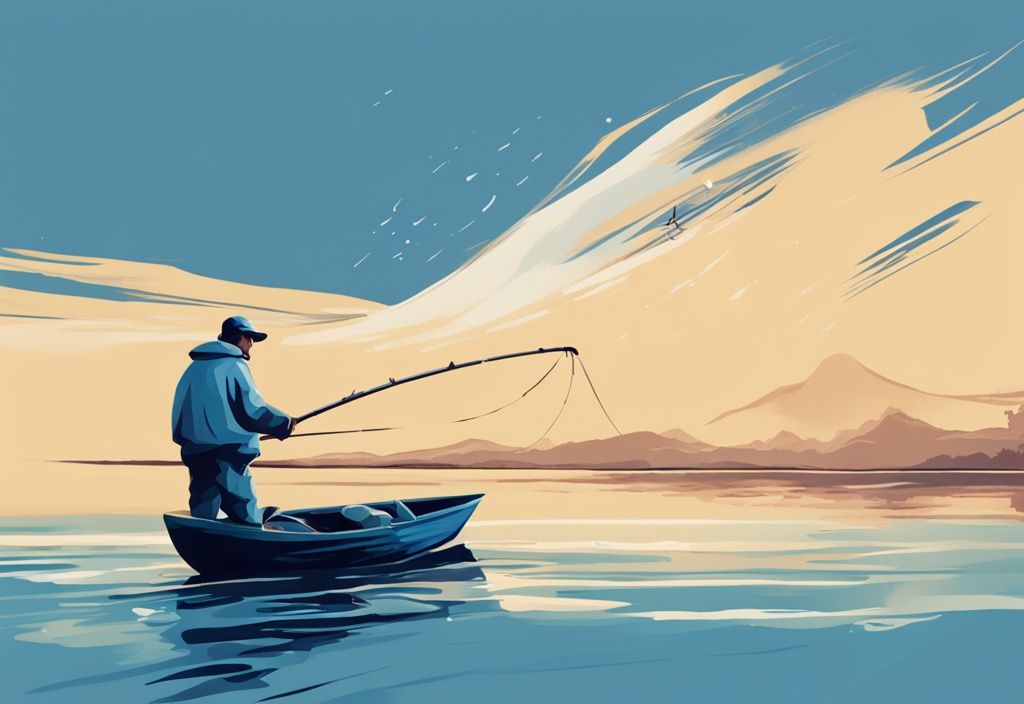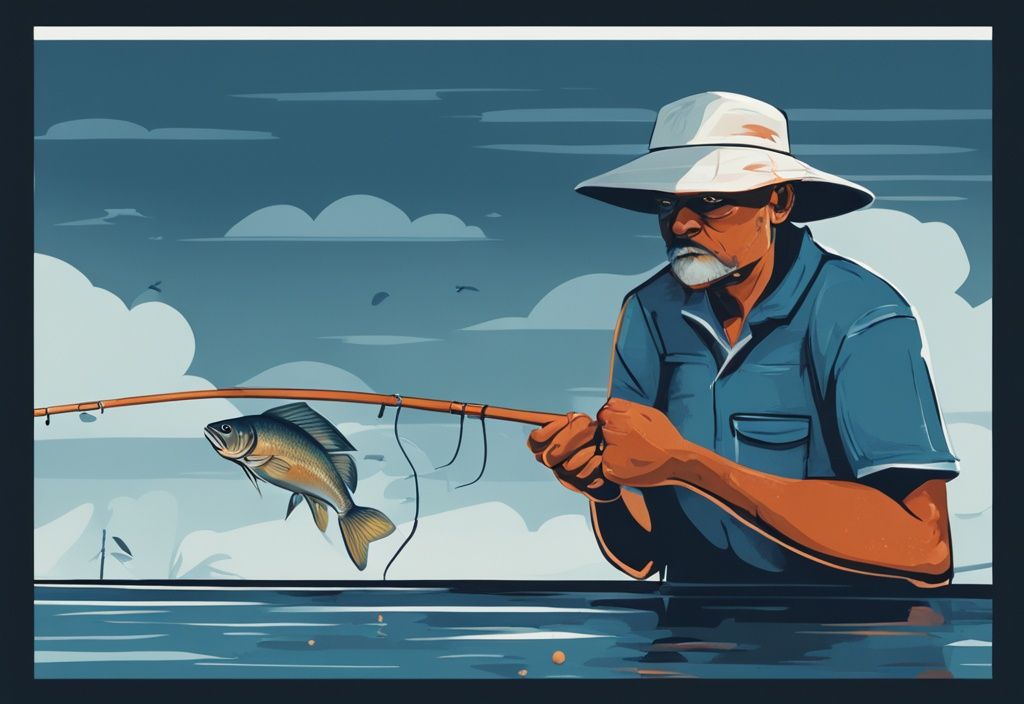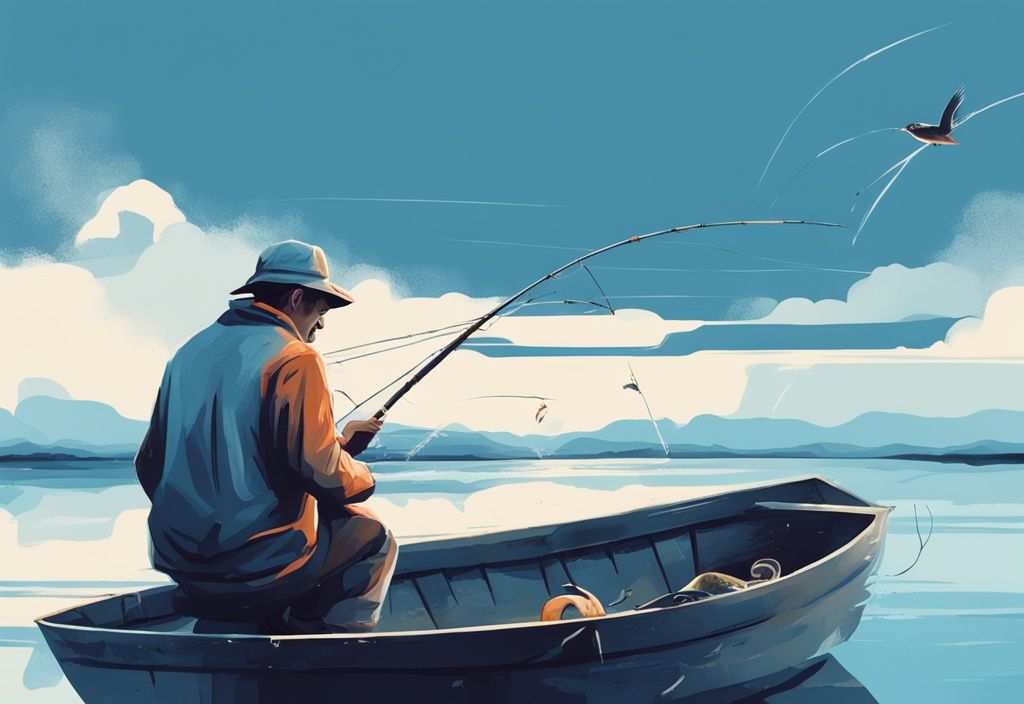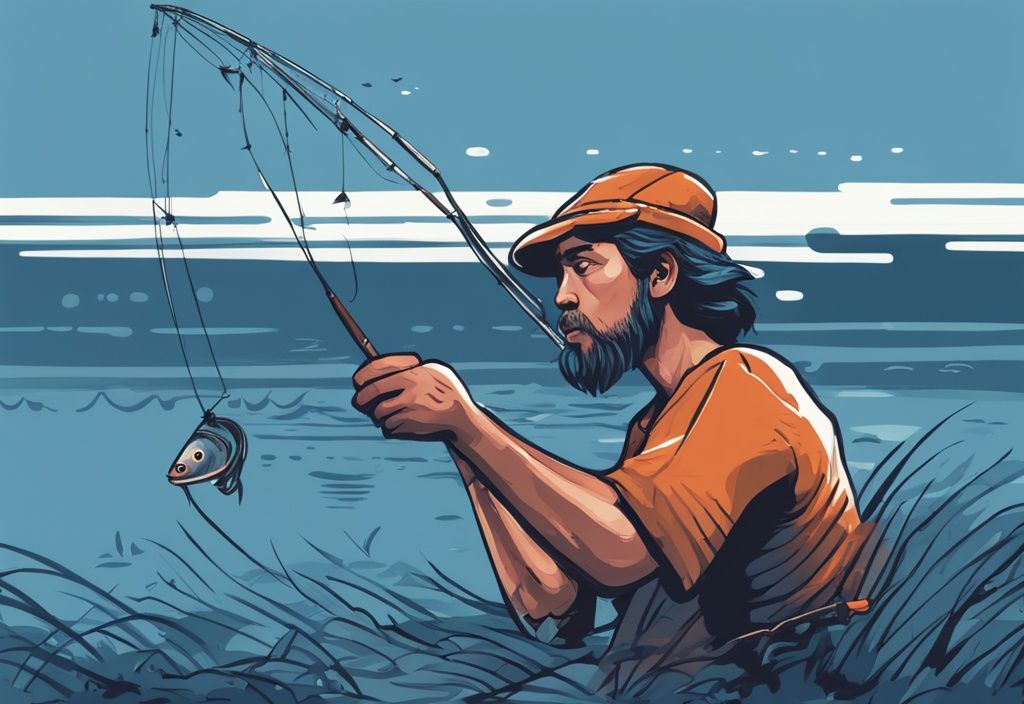Picture this: a serene morning by the lake, the sun rising as you cast your line into the water. For many, fishing is a cherished pastime, a way to connect with nature and unwind. But here’s a thought to chew on: does fishing harm the very creatures it seeks to catch?
Some folks say fish don’t feel pain, while others argue our fishing practices might cause them some suffering. Let’s dive into the science of fish pain, exploring their anatomy and the studies that fuel this debate. We’ll also cast a line into how different fishing methods, from catch-and-release to commercial operations, impact fish welfare and the ethical considerations that come with it.
For those passionate about fishing, understanding these issues is crucial. Whether you’re a weekend angler, an advocate for animal rights, or someone concerned about environmental sustainability, the implications of fishing practices are far-reaching. This exploration will also highlight advancements in sustainable techniques and improvements in catch-and-release methods, offering insights into how we can reduce harm while enjoying this beloved activity.
Join us as we uncover the truth behind the rod and reel, navigating the complexities of fishing’s impact on fish and the ethical questions it raises. Through this journey, we aim to equip you with knowledge and perspectives that can shape a more informed and responsible approach to fishing.
Do Fish Feel Pain? A Look at the Science
Understanding Fish Anatomy and Pain Receptors
Fish anatomy offers a fascinating angle on the age-old question: does fishing hurt fish? Picture this: unlike us, fish have A-delta-fiber nociceptors, which are quick to react to immediate stimuli. But here’s the kicker—they don’t have C-fiber nociceptors, which are linked to long-lasting pain in humans. This anatomical twist has led some scientists to believe fish might not feel pain like we do.
And let’s talk brains for a moment. Fish don’t have a cerebral cortex, the part of our brain that processes pain and consciousness. This missing piece adds fuel to the debate: are fish reactions just reflexes, or do they hint at something more? I’ve seen fish keep munching away, hooks and all, which makes you wonder—do they even notice? These insights are at the heart of the ongoing conversation about fish and pain.
Scientific Studies on Fish Pain
Scientific studies have taken a deep dive into whether fishing hurts fish, focusing on their physiological and behavioral responses. Some research points out that fish like trout have pain receptors similar to mammals, hinting at the possibility of pain perception.
Behavioral clues—like fish rubbing sore spots or changing their feeding habits when they encounter irritants or electric shocks—add weight to the argument that fish might indeed feel pain. These findings have even shaped policies in places like Germany and Colombia, where catch-and-release fishing is a no-go due to concerns about fish pain.
Yet, despite all this evidence, the scientific community is still split, with no clear agreement. The debate rages on, underscoring the complexity of understanding pain in fish and what it means for our fishing practices.

How Fishing Practices Impact Fish Welfare
Fishing, whether for leisure or livelihood, significantly affects fish welfare. Understanding the implications of different fishing methods is crucial for anyone who loves the sport and cares about marine life. Let’s dive into how catch and release and commercial fishing practices impact fish and their environments.
Effects of Catch and Release on Fish Health
Catch and release fishing might seem like a gentle nod to conservation, but it stirs up a sea of concerns about fish welfare. Picture this: a fish hooked, fighting for its life, feeling pain and injury, especially around its mouth. Even with the best intentions, this practice can lead to a mortality rate between 5 to 30 percent. That’s quite a number, even when anglers handle their catch with the utmost care.
Now, think about the time fish spend out of the water during this process. Unlike us, fish can’t breathe air. Every second counts, and prolonged exposure can be downright dangerous. Handling them with dry hands or placing them on dry surfaces can strip away their protective mucous layer. This makes them vulnerable to infections, increasing their mortality risk. Proper handling isn’t just a suggestion—it’s essential for their survival.
Consequences of Commercial Fishing
Commercial fishing is a behemoth of an industry, casting a long shadow over fish welfare and marine ecosystems. It’s a relentless machine, capturing and killing millions of fish every minute. And let’s not forget about bycatch—those unintended casualties like dolphins and sea turtles. This doesn’t just affect fish populations; it throws the entire marine ecosystem off balance.
The gear used in commercial fishing is another villain in this tale, contributing to ocean plastic waste. This pollution is a menace to marine life and damages crucial habitats like coral reefs. Using baitfish to catch larger species? It can introduce invasive species and mess with food chains. Overfishing just adds fuel to the fire, disrupting predator-prey relationships and slashing biodiversity. The message is clear: we need sustainable fishing practices to safeguard our oceans and marine life.
Ethical Implications of Fishing
Fishing isn’t just about casting lines and reeling in the big one; it’s about understanding the impact of our actions on the watery world we love. From catch-and-release practices to the timing of our fishing trips, every choice carries weight. Let’s dive into these ethical waters and see what ripples our actions might cause.
The Morality of Catch-and-Release Fishing
Catch-and-release fishing—it’s a topic that can stir up quite the debate, right? On one hand, many of us anglers see it as a kinder way to enjoy the sport, a way to tip our hats to nature while still getting that adrenaline rush. But then, there’s that nagging question: does fishing hurt fish?
Imagine the scene: you’ve hooked a fish, felt the thrill of the fight, and then gently let it slip back into the water. Sounds humane, but critics argue that the stress and potential injuries inflicted during this process might not be as harmless as we’d like to believe. Even with the best intentions, the act of catching and releasing can cause stress, and sometimes, sadly, even lead to the fish’s demise.
So, what can we do? Well, some researchers suggest we tweak our methods to minimize harm. Think barbless hooks and gentle handling—little changes that can make a big difference. But even with these precautions, the reality is that the process can still be tough on our finned friends.

Now, let’s talk about timing. Fishing during spawning seasons—ever thought about what that means for fish populations? Catching fish when they’re busy ensuring the next generation can disrupt their reproductive efforts. This isn’t just about individual fish; it’s about the health of entire populations. It’s a reminder for us to consider the broader impact of our actions on the ecosystem.
Fishing is a joy, no doubt about it. But as we cast our lines, let’s also cast a thought to the ethics behind our beloved sport.
Reducing Harm: Improvements in Fishing Practices
Fishing is more than just a pastime; it’s a way to connect with nature and unwind. But as we cast our lines, it’s crucial to consider the impact on the fish we love. By embracing sustainable fishing techniques, we can address the question, “does fishing hurt fish?” and ensure our actions support healthy aquatic ecosystems.
Adopting Sustainable Fishing Techniques
Imagine the vibrant world beneath the waves—coral reefs teeming with life and seagrass beds swaying gently. These ecosystems are the backbone of marine biodiversity, providing essential shelter and nourishment for countless fish species. Unfortunately, fishing can sometimes disrupt these vital habitats.
But fear not, fellow anglers! By adopting sustainable practices, we can minimize our footprint. One simple change is using heavier tackle, which reduces the time fish spend struggling. This not only eases their stress but also boosts their chances of survival after release.
And let’s not forget the power of knowledge. Educating ourselves on proper catch-and-release techniques is key. When we handle fish with care, we help maintain robust fish populations, ensuring our beloved sport thrives for generations to come.
Improving Catch-and-Release Practices
Ever wondered if your catch-and-release methods could be kinder to our finned friends? The answer lies in the details. Switching to barbless and circle hooks is a game-changer. These hooks cause less damage, making it easier for fish to recover and swim away unscathed.
Handling fish with wet hands is another small but mighty tip. It protects their delicate skin and scales, keeping them healthy and strong. And remember, time is of the essence—minimize air exposure to give fish the best shot at survival.
For those of us who love a challenge, reducing hook sizes can make a big difference. Smaller hooks mean smaller wounds, allowing fish to feed and flourish. By refining our techniques, we can enjoy the thrill of the catch while nurturing the ecosystems we cherish.

FAQ
Ever wondered if fishing is a sport that respects its participants, both human and aquatic? Let’s dive into some common questions that might just reel you in.
Do fish suffer when caught?
Oh, the age-old question that tugs at the heartstrings of many anglers. When a fish is caught, it can indeed experience stress, which might lead to exhaustion, injury, or even death. Imagine the hook piercing vital areas like the gills or organs—it’s a grim scenario. Plus, the stress and exhaustion can cause a buildup of lactic acid in their muscles and blood. It’s a tough world under the waves, isn’t it?
What are the best practices for catch-and-release fishing?
Catch-and-release can be a beautiful dance if done right. First off, using circle hooks can help minimize deep hooking. And remember, wet those hands before handling the fish to keep their skin safe. Limit their air exposure and release them quickly—it’s like giving them a second chance at life. Oh, and steer clear of fishing during spawning seasons; let’s give those fish populations a fighting chance, shall we?
Are there fishing methods that are less harmful to fish?
Absolutely! Sustainable fishing practices and a few gear tweaks can make all the difference. Try barbless hooks and heavier tackle to reduce injury and stress. If you’re fishing in deep waters, venting gas bladders can really help the fish survive the journey back down. It’s all about respecting the sport and the creatures we share it with.
Conclusion
Fishing, without a doubt, can cause physical pain and stress to fish, stirring up some serious ethical questions about our beloved pastime. When we reel in a catch, it often leads to injuries, stress, and sometimes even death for the fish. This sparks a heated debate about the moral side of fishing. The question, “does fishing hurt fish?” is at the heart of this conversation, nudging us anglers to think about the well-being of the fish we chase.
Now, while scientists are still hashing out whether fish feel pain like we do, there’s a growing agreement that we should do our best to minimize harm. This means adopting practices that ease the physical and mental stress on fish. Techniques like using barbless hooks, keeping air exposure brief, and ensuring a quick release play a crucial role in lessening the negative impact on fish populations. These methods not only tackle ethical concerns but also help sustain fish populations, keeping fishing a viable sport for future generations.
Further research and education on sustainable and humane fishing practices are vital for the health of our marine ecosystems. By understanding how fishing affects fish and their habitats, we can make informed decisions that promote conservation. Educating the fishing community about best practices and the importance of ecosystem balance can lead to healthier marine environments. This, in turn, supports the diverse fishing styles and locations that folks at FishingAttack.com love to explore, fostering a community spirit that respects both the sport and the natural world.


